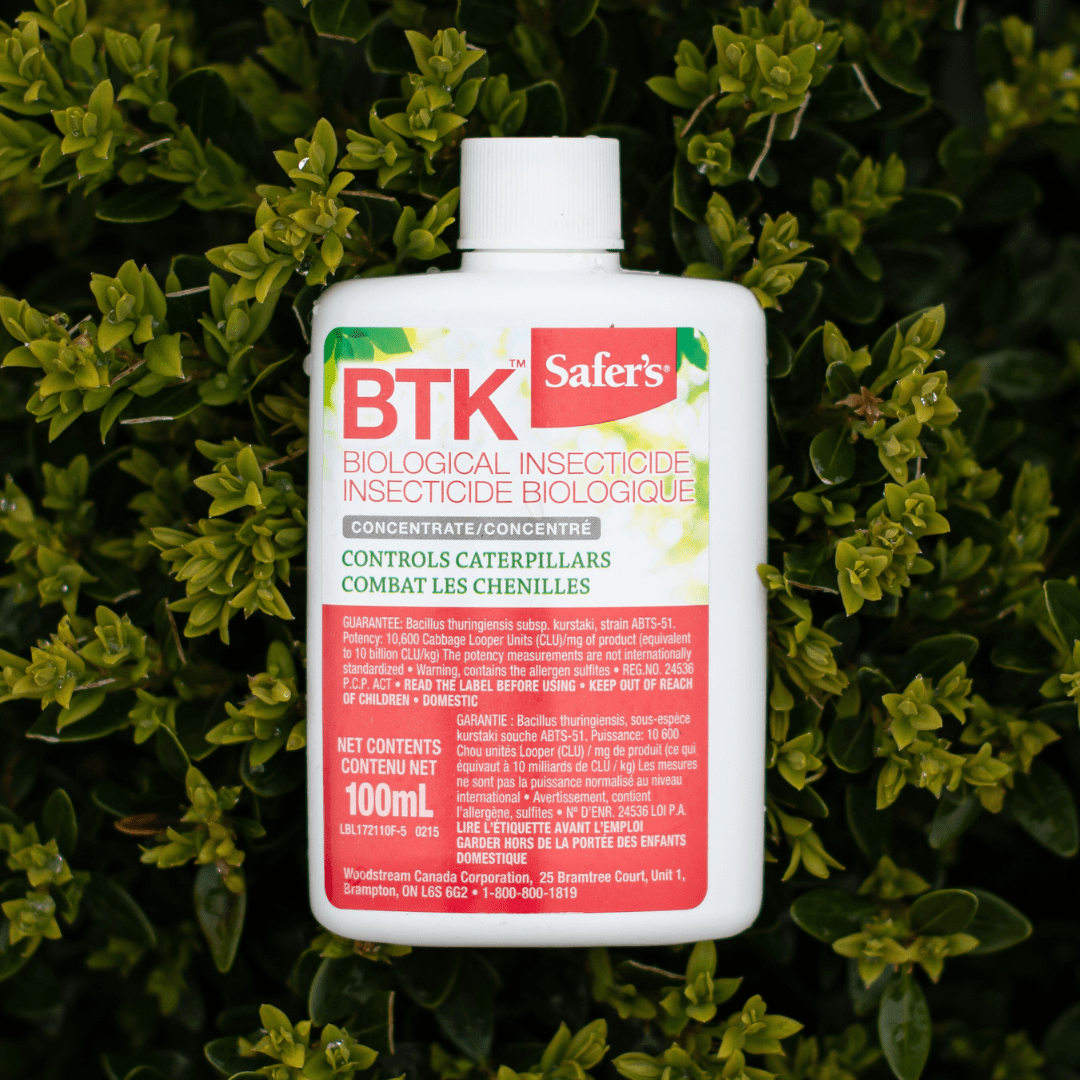Saturday, April 29th, 2023
Disclaimer: Product stock, prices, and information is subject to change after blog publish date.
The Box Tree Moth is a relatively new pest in Ontario that is primarily found on boxwood shrubs. Unfortunately, it can cause severe damage. The Box Tree Moth is not to be confused with another invasive pest known as the LD moth, which is found in large trees.
The larvae of the Box Tree Moth feeds on boxwood foliage from mid-May to early September and may cause defoliation if left unchecked. Keep reading for more information on what to look for!
When inspecting your boxwood shrubs for signs of the Box Tree Moth, pay attention to individual leaves that have a small, white cocoon.
Photo courtesy of Landscape Ontario.
This is what young Box Tree Moth larva looks like. If you notice that the leaves of your boxwood shrub are turning brown, similar to the photo above, it is likely feeding damage caused by young Box Tree Moth larvae.
Photos courtesy of Landscape Ontario.
As the caterpillars mature, webbing and frass will be found amongst chewed leaves and twigs.
Photo courtesy of Landscape Ontario.
If you have boxwood shrubs at home and you’re worried about the Box Tree Moth, you should monitor your boxwoods for cocoons, larvae, and leaf damage from May 15th to June 15th, July 15th to August 15th and September 1st to September 20th.
If Box Tree Moth caterpillars are actively feeding on your boxwood shrubs, you can apply BTK, which is a biological insecticide. BTK must be applied when the Box Tree Moth caterpillars are feeding on the boxwood foliage to maximize the product’s effectiveness. Safer’s BTK concentrate is available in-store and online for $16.99.
Repeat an application of BTK if active feeding caterpillars are still found 5-7 days after the initial application. Even if you think BTK has done its job, it is important to routinely monitor the condition of your boxwood shrubs and continually look for signs of the Box Tree Moth.
If your boxwoods are infested by the Box Tree Moth, it may be necessary to remove or trim them. Proper disposal of infested boxwoods is crucial to slowing the spread of the Box Tree Moth. To help prevent the spread, please place the infested boxwood shrub clippings in a black plastic garbage bag and secure it tightly. Place the bag in direct sunlight for at least 48 hours. After 48 hours, the Box Tree Moth larvae should be dead and the plant material can be safely disposed of in your yard waste bin.
If you have any other questions or concerns about the Box Tree Moth, feel free to reach out to us via phone, email, or stop in to speak to someone!
You can also check out a very informative article from Landscape Ontario, which can be found here.
Photos courtesy of Landscape Ontario.








